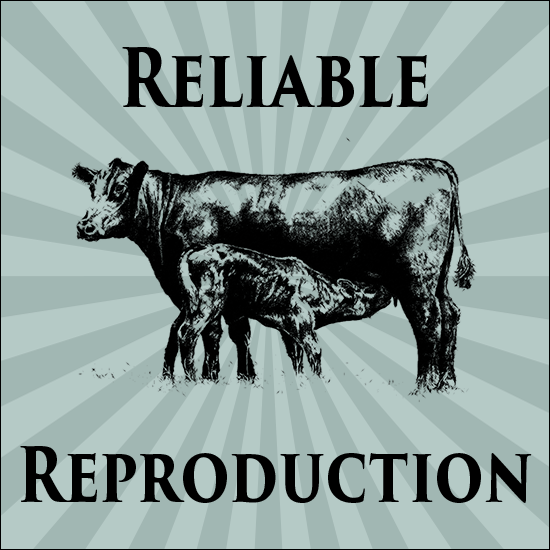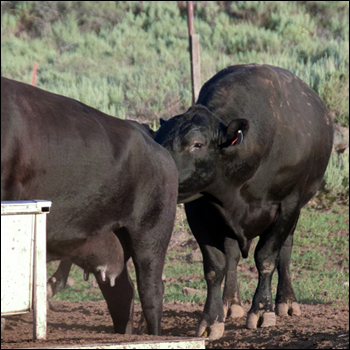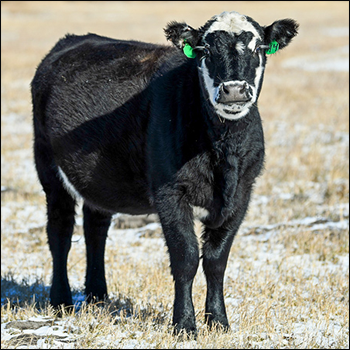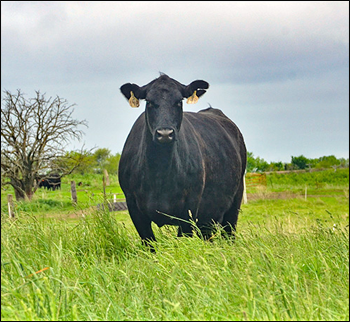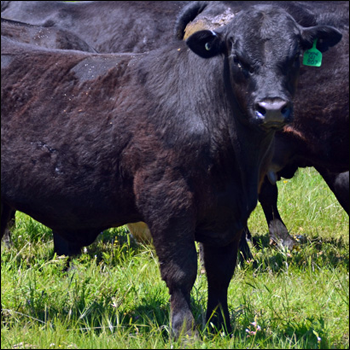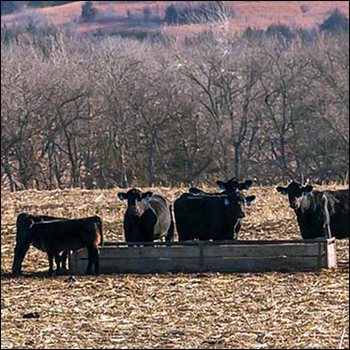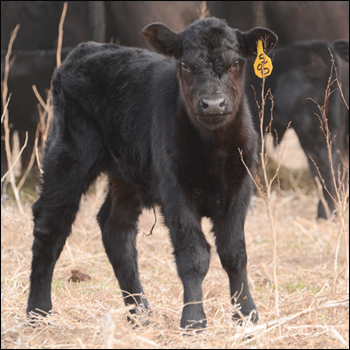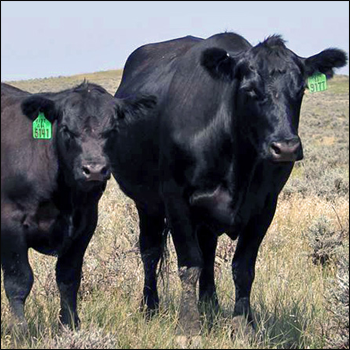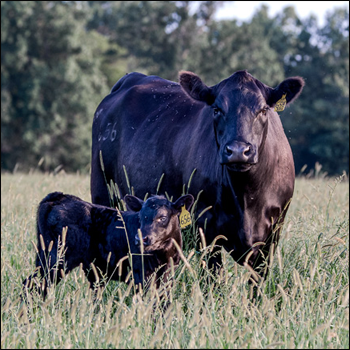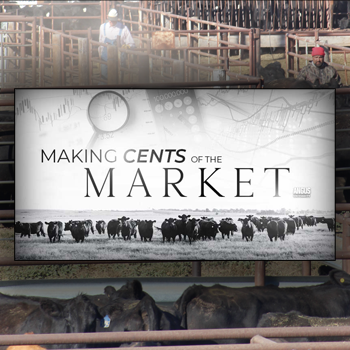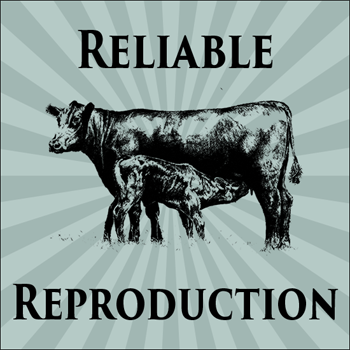

The Link
Are your genetics like a Charlie Brown Christmas tree?
Do you like a Charlie Brown Christmas tree? Loading down the little skinny tree lacking a good base with lights, tinsel, ornaments and other decorations doesn’t make it look that great, in my opinion. It just shows I picked the wrong tree.
It’s no different with genetics. All the programs that are out there — like natural and Global Animal Partnership (GAP) — won’t make the genetics of your feeder calves better if you picked poorly from the beginning.
Choosing genetics isn’t a lot different than choosing a Christmas tree, according to Marcus Harwood, Mid-Atlantic Cattle Sales owner. Pick the best from the start so you have a good base on which to build.
The Harward family is no stranger to good cattle. Not only do they operate auction markets throughout North Carolina, they own Rocking H Cattle Co. and Harward Sisters Cattle Co. Getting rewarded for the hard work they put into their own commercial cattle herd led Harward to look for a way to get the most value out of the Rocking H calf crop. Value-added programs like Non-Hormone Treated Cattle (NHTC), NeverEver 3 (NE3) and GAP were buzzwords he had heard discussed.
Calves enrolled in GAP and NE3 could not be sold through an auction market. They had to be picked up at the farm because GAP-enrolled calves cannot be sold through a brick-and-mortar sale barn. NHTC calves must be sold through a barn that has the verification to sell calves enrolled in that program.
Harward decided he would help himself and fellow Southeastern cattlemen get the most value out of their feeder calves. What they lacked was marketing options. Mid-Atlantic Cattle Sales video was born in 2010 to provide a way to sell load lots of value-added cattle in an auction setting.

The Genetic Merit Scorecard tells buyers of a calf's genetic potential to perform well down the line. |
Mid-Atlantic Cattle Sales hosted its first video sale in 2010. In 2017 USDA reported around 2,000 head sold on the Mid-Atlantic Video sale as compared to 30,000 head marketed in 2021. Prices paid for those NE3 and GAP calves in the value-added programs last year line up to premiums received from other video auction markets across the country — around $18 per hundredweight for load lots of predominantly Angus feeder calves enrolled in NHTC, NE3 and GAP.
Leading the way
Ralph and James Britt, Calypso, N.C., were the first producers to use AngusLinkSM on the Mid-Atlantic Cattle Sales video sale last summer. They choose AngusLink as their third-party USDA verification company. They estimated their calves brought 10¢ more than other value-added calves marketed at the same time. They attribute that price increase to the AngusLink Genetic Merit Scorecard® (GMS).
James and Ralph take great pride in their cattle and the genetics they use. It’s obvious they want to produce the best product possible — from livestock to crops.
Reese Tuckwiller, American Angus Association regional manager, and I had a chance to visit their operation this spring. As we rolled in, they were working on equipment, spreading poultry litter on the fields, and checking the rye to determine if it was time to cut. We hopped in with James and took off to look at pairs and replacement heifers. Ralph caught up with us at the replacement heifers.
I really enjoyed a story James told about his dad — how they had gone to the 2017 Yon Family Farm sale and fell in love with Yon High Cotton D885. Bidding started, and James commented, “Darn. I really liked that bull, but that is too much for us.”
When the final gavel fell, they owned the bull, and James was speechless. After meeting James, I’m going to say that doesn’t happen often. Ralph agrees with Harward: At the end of the day, good genetics pay.
The Britts operate a diversified farming operation because having options evens out the risk. They used the same philosophy when they enrolled in AngusLink and chose NHTC, NE3, GAP, AngusVerified and the Genetic Merit Scorecard.
More program claims equate to more interested buyers. More buyers mean more options when it comes harvest time for those cattle. Calves that score well are always in demand. Their Genetic Merit Scorecard showed just how good their feeder calves’ genetics truly were, and buyers responded.
The next generation
Two years ago, David Gazda, American Angus Association regional manager for the Southeast, invited me to ride with him for a week. We put on meetings, and met one on one with producers and auction market operators about the benefits of AngusLink. One of those contacts was Brooke Harward.
Brooke was a member of the National Junior Angus Association (NJAA). She excelled in the show ring and as Miss American Angus. Now she has joined forces with her parents in the sale barn and the video sales.
Brooke has the passion and desire to see Southeastern cattle and the people who produce those calves rewarded for their quality genetics on sale day. She is pulling out all the stops to help producers get that extra value. She promotes natural cattle and is key to helping bridge the gap between auction market and program value.
Brooke and Marcus both are excited they are playing a part in getting the quality genetics in the calves from the Carolinas equal money on sale day. They don’t want to sell any Charlie Brown Christmas trees, either.
Editor’s note: Ginette Gottswiller is the director of verification services for the American Angus Association.

Angus Proud
In this Angus Proud series, Editorial Intern Jessica Wesson provides insights into how producers across the country use Angus genetics in their respective environments.
 Angus Proud: Scott Sproul
Angus Proud: Scott Sproul
Oklahoma operation learned wisdom of moving calving season to better suit their marketing needs.
 Angus Proud: Bubba Crosby
Angus Proud: Bubba Crosby
Fall-calving Georgia herd uses quality and co-ops to market calves.
 Angus Proud: Jim Moore
Angus Proud: Jim Moore
Arkansas operation retains ownership through feeding and values carcass data.
 Angus Proud: Les Shaw
Angus Proud: Les Shaw
South Dakota operation manages winter with preparation and bull selection.
 Angus Proud: Jeremy Stevens
Angus Proud: Jeremy Stevens
Nebraska operation is self-sufficient for feedstuffs despite sandy soil.
 Angus Proud: Dave Rutan
Angus Proud: Dave Rutan
Angus breeder gets the most out of his bull investment by partnering with opposite calving-season operation.
